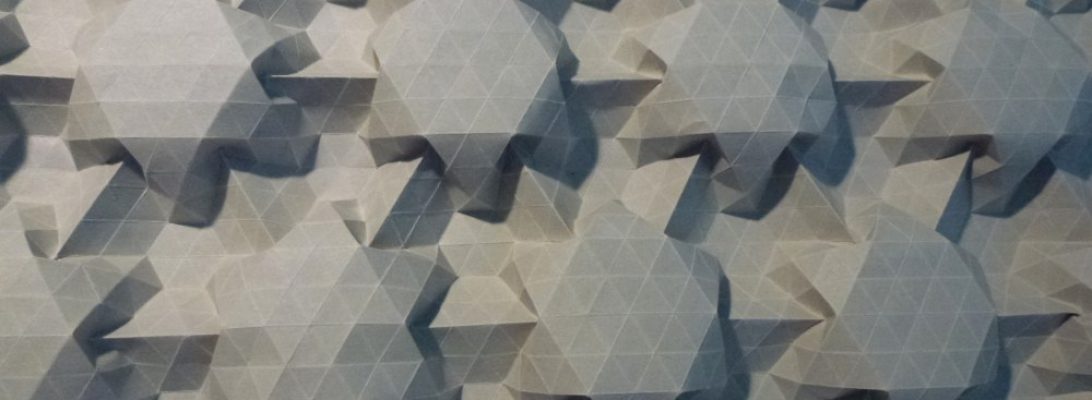Proofing manuscripts that are soon to become Origami books is an interesting (and sometimes intense) business. While looking at a recent draft, I happened upon Nguyễn Tiến Kha’s lovely new “Lapin (Rabbit)” design and new I needed to test-fold it:

This is an intense fold – it eats up so much paper (I folded this little lovely from a 45cm square), but in the end we get a lovely bi-colour rabbit with all its bits in the right place, good proportions (although a little “top heavy”) and (with a little bum surgery) self-standing.
There are lots of origami rabbits, I have folded most of them, and this one is a charmer for a bunch of reasons. The fold sequence is ingenious, intense and really reliant of accuracy early – lots of pre-creasing provides good landmarks later on, and some lovely emergent geometry as you turn things inside out, round and about.
Continue reading

























